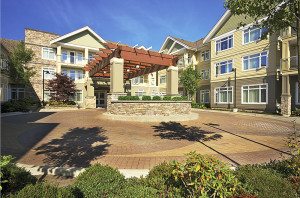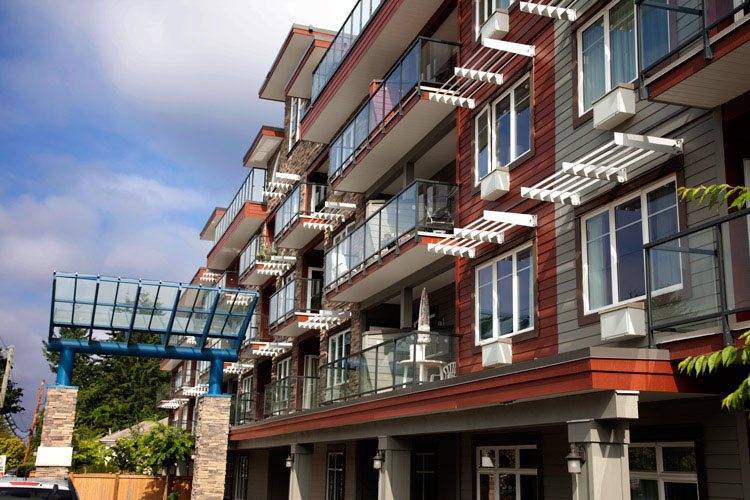When it comes to how we refer to ourselves in the continuing care sector, few things make me bristle more than when I hear the “F” word. Come on, just admit it. We’ve all done it. At some point over the last week you have probably heard someone refer to a care home as a “facility”.

While some might not find that “F” word as offensive as the more infamous one, it certainly has an impact on how our sector is perceived.
Given the results of our recent public opinion poll on the many myths and misconceptions that plague our sector, we all know there remains lots of work to do in educating the public and decision-makers alike.
At our recent 2015 Annual Conference held in Whistler, I had the opportunity to sit on a panel discussion with two other CEOs from the Ontario Long-Term Care Association and the Alberta Continuing Care Association. We were there to discuss how our sector could become even more innovative.
While there were many great ideas put forward, I suggested we simply needed to be more innovative in the way we talk about ourselves. If we did nothing else other than help reform the outdated terminology used to describe BC’s continuing care sector, that in itself would be a giant leap forward.

Let’s start with the fact that regardless of who you talk to, the term “seniors facility” is regularly used to describe a care home.
Interestingly, if a senior were living in a single family home, condo or apartment, nobody would refer to it as a “facility”. So why is it okay to call the place they now call home one?
Why do I consider the use of the word “facility” problematic? Well, as I indicated to the delegates at our conference, cars are manufactured in facilities. Nike t-shirts are sewn together in facilities. We house those who break laws in facilities. Are seniors really living in something that should be referred to as a facility?

Many of the modern care homes built in recent times have beautiful gardens and pathways. They have well stocked libraries, iPad stations, games rooms, exercise rooms and modern art hanging on their walls. A wide variety of delicious and nutritious meals are prepared on-site daily by a dedicated team of chefs in consultation with dieticians, residents and their families.
Some building designs and adjacent landscapes are so immaculate that from the outside, you can barely tell them apart from the many high-end condominiums popping up throughout our neighbourhoods.
Based on what I’ve just described, is that what you think of when you think of a facility?
In a recent column, Vancouver Sun writer Daphne Bramham chose to go beyond simply referring to care homes as facilities. In response to the recent Seniors Advocate report, she took it one step further and asserted we should stop “warehousing” seniors in these “facilities”. Bramham also used a term in her column which is rarely heard in our sector these days – “nursing home”. It’s a bit of terminology that surely conjures up images in the minds of her readers of young women, all dressed up in their traditional white nursing uniforms and caps walking around in a hospital-like setting.

One can only imagine how disheartening it must have been for the dedicated care aides, licensed practical nurses, registered nurses, occupational therapists, cleaning staff and countless other frontline workers to read in our largest daily newspaper that they are working in a “warehouse” filled with seniors.
This is especially true when as I’ve described above, we have come a long way over the last couple of decades in modernizing our care homes to bring them in line with the growing needs and desires of our ageing population.
Words matter.
The words we use to describe ourselves matter.
The terminology others use to refer to us matters.
That’s why I put the challenge out at our conference to anyone working in the sector to lead by example. Please stop using the “F” word. If you catch someone using the “F” word, take a moment to kindly point out why this is problematic.
In the same vein, if you hear someone claim seniors are being “warehoused”, don’t be afraid to challenge that notion with the facts. Perhaps even offer them a tour of your care home to show them first-hand the wonderful services you offer and/or get them to meet some of the seniors who live there.
BCCPA members are responsible for providing the basic necessities of life for over 11,000 seniors in care every day. It’s a rewarding career, but sadly one that rarely earns the public or media’s praise or respect.
Having moved out of a single family house, condo or apartment, thousands of seniors now simply live in a different kind of home – a care home. A warm and loving place that should be considered no less of a home than the one they just left behind.
Written by Daniel Fontaine – CEO for the BC Care Providers Association




